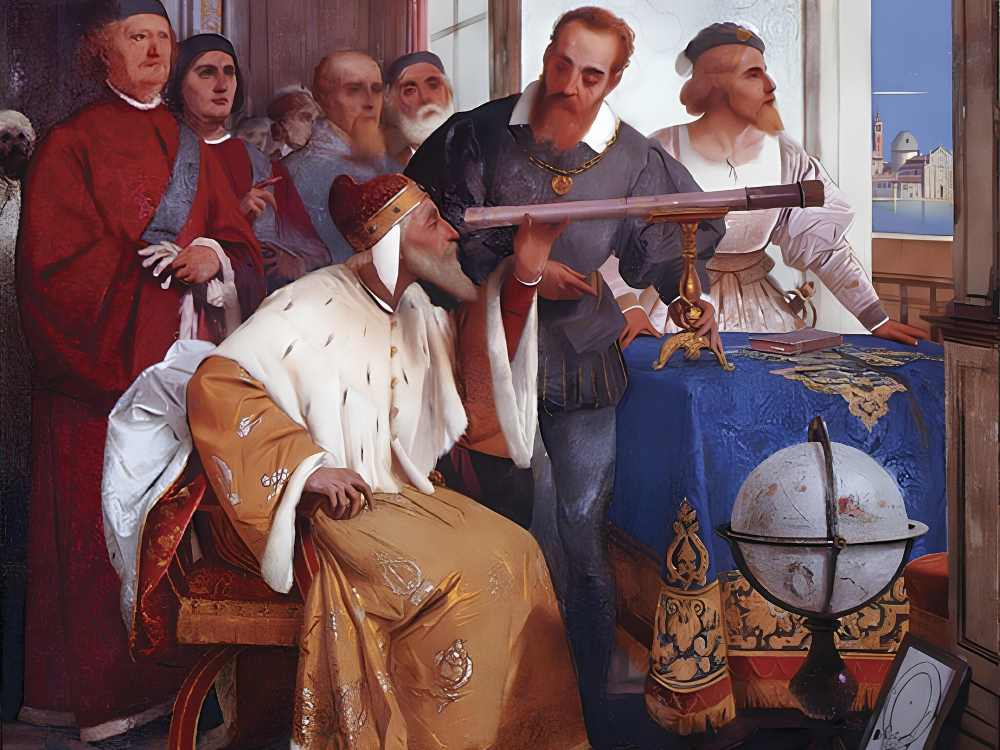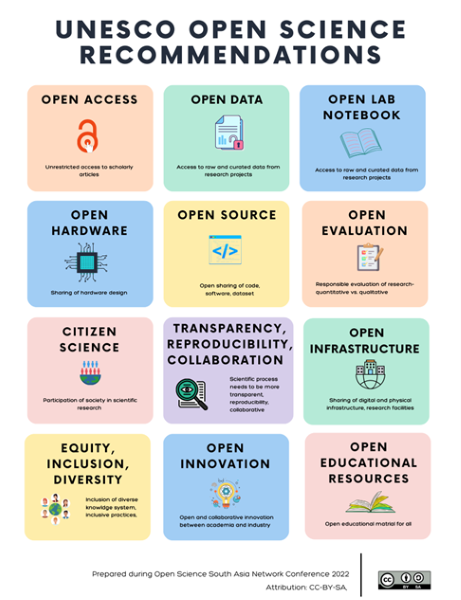The Evolution and Progress of Open Science
Open science practices have been part of the scientific system for at least four centuries. But restrictions on access and usage have hindered the progress of open science values.

Open science practices have been part of the scientific system for at least four centuries. But restrictions on access and usage have hindered the progress of open science values.
This article sets the scene for a series exploring regional perspectives on open science.
Open science is not a new phenomenon. We can trace its origins back to the inception of scholarly journals, which revolutionized the dissemination of knowledge.
Before the advent of journals, natural philosophers and their wealthy patrons were the only ones who knew about their discoveries. The cultural norm was to keep this knowledge within exclusive circles—a system of “secrecy in the pursuit of Nature’s Secrets” (David, 2008).
This norm changed drastically in the seventeenth century with the advent of scholarly journals. Among the first were the Journal de Sçavans (of France) and Philosophical Transactions of the Royal Society (of England), which started publishing within a few weeks of each other in 1665 (Tumin, 2019). Produced by a collective of learned professionals, these journals made knowledge available to all scholars who could access them, marking the beginning of the open science era.
The Royal Society of Edinburgh is popularly credited with the introduction of peer review in 1731, for their publication “Medical Essays and Observations,” although the process wasn’t peer review in the modern sense (of double or single-blind reviews by at least two experts in the field). A century later, in 1832, the Royal Society introduced a process by which field experts verified the authenticity of research prior to publication, similar to peer review as we understand it today, and other scholarly societies followed suit.
For centuries, academic journals have disseminated new ideas. Although more than 10,000 journals are now published globally, a figure that grows by about 4–5% each year (Johnson et al., 2018), the primary journal publication model remained mostly unchanged for nearly 400 years. But over the past few decades, things have changed, as the management of journals has largely shifted from learned societies to commercial publishers.
By the mid-twentieth century, as nations recognized that science and technology could drive economic growth, increased public funding led to a boom in knowledge generation. The few journals run by scholarly societies couldn’t keep up, creating an opportunity for commercial publishers.
Initially, these publishers helped create a more efficient system. Over time, however, commercial interests began to overshadow the scientific ethos—for example, in the exorbitant prices charged for journal subscriptions. While global connectivity was never perfect due to high printing and circulation costs, often placing the Global South at a disadvantage, commercial journals made science even less accessible to many researchers.
The irony of the situation should not be lost on readers. The articles published are mostly the results of publicly funded research. The validation of these results is done by peer reviewers, who are researchers themselves and work for free; most journal editors are also unpaid. But these same researchers encounter paywalls when trying to access articles they need. Moreover, despite public funds being the primary source of support for scientific research conducted at universities, the results of this research remain largely inaccessible to the public.
Modern science has evolved by embracing its “public, collective character, and its commitment to the ethos of cooperative inquiry and to free sharing of knowledge,” making it a public good (David, 2003, para. 14). However, restrictions on access and usage have hindered these “open science” values.
The Budapest Open Access Initiative (BOAI) declaration, published in 2002, defined open access as the availability of scholarly literature freely accessible on the internet. In the two decades since, while there have been advancements in open access, they have not occurred as rapidly as expected.
An even more worrying trend is the barrier to publishing. Some journals now charge exorbitant fees for authors to publish their articles as open access. Instead of reducing inequality, this practice has created a new form of it.
Another obstacle to achieving open science and open knowledge is the power afforded to certain metrics. Metrics can be useful, but as described by Goodhart’s Law: “When a measure becomes a target, it ceases to be a good measure” (2024, para. 1).
Over time, the ultimate goal of research has shifted to focus primarily on publishing articles, with the impact factor of journals often being used as the standard to measure research quality. This emphasis on bibliometrics over the insights offered by research has come to dictate career progression, pressuring researchers to publish more frequently. The prevailing “publish or perish” culture in academia has given rise to “paper mills”—factories that have flooded the system with unreliable and often fraudulent research findings. The integrity of scientific inquiry is now under threat. Most worryingly, bibliometric-driven knowledge creation has distracted from the urgent need to develop knowledge that addresses major global challenges.
These problems are compounded by global university rankings that rely on bibliometrics. The functions of universities are multifaceted, and expressing those in a single score is flawed, as noted by scholars (Gadd, 2021). Among other issues, scores in global university rankings are predominantly driven by two factors: citations, which are also connected to a researcher’s number of publications, and reputation. Neither of these are adequate measures of quality, and both are prone to gaming. There have been numerous recent reports of the manipulation of citations (Fister, 2017). Research misconduct, including data and image manipulation and false claims, is also on the rise, leading to a significant number of retractions (Van Noorden, 2023).
Instead of improving scientific research, the current approach to metrics and rankings deepens its flaws.
The science system needs another transformation.
This time, the enormous advantages digital technologies bring to knowledge circulation can aid the transition. Digitalization not only lowers costs but also expands possibilities, allowing for the publication of data alongside articles. Even raw data can be easily published for better scrutiny. The accessibility and reuse of data make possible a more efficient discovery system.

Most importantly, we need to change the cultural norms that have prevailed over the past few decades. The UNESCO open science recommendations (2021) provide a useful framework.
This framework advocates for various practices: open access to publications, open research data and code, open-source software and hardware, open evaluation processes, and increased collaboration and engagement with societal actors. These practices are recognized as the catalysts for a more efficient, reproducible, and impactful scientific system that promises to deliver wide-reaching benefits to society. While the UNESCO recommendations may have limited the scope of open science to a few good practices by not discussing the historical evolution of the scientific system, the document has certainly succeeded in attracting attention and prompting action.
Four centuries ago, the advent of scholarly journals initiated the practice of open science. The opportunity before us today is no less transformative: to align the practice of open science with its values, propelling the scientific system into a new era.
Note: The word science here does not imply a specific discipline but a knowledge system built on facts, logic, and peer scrutiny. Science is designed to be self-correcting, adapting continually based on new findings.
Budapest Open Access Initiative. (2002, February 14). Read the Declaration. https://www.budapestopenaccessinitiative.org/read/
David, P.A. (2008) The Historical Origins of ‘Open Science’: An Essay on Patronage, Reputation and Common Agency Contracting in the Scientific Revolution, Capitalism and Society: Vol. 3: Iss. 2, Article 5. DOI: 10.2202/1932-0213.1040
David, P. (2003). The Economic Logic of “Open science” and the balance between private property rights and the public domain in scientific data and information: A Primer, The Role of Scientific and Technical Data and Information in the Public Domain: Proceedings of a Symposium. https://www.ncbi.nlm.nih.gov/books/NBK221867/
Fister Jr, I. (2017, January 18). How to spot a “citation cartel.” Retraction Watch. https://retractionwatch.com/2017/01/18/spot-citation-cartel/
Gadd, E. (2021). Mis-measuring our universities: Why global university rankings don’t add up. Frontiers in Research Metrics and Analytics, 6, 680023. https://doi.org/10.3389/frma.2021.680023
Goodhart’s law (2024, October 14). In Wikipedia. https://en.wikipedia.org/w/index.php?title=Goodhart%27s_law&oldid=1251110537
Johnson, R., Watkinson, A., & Mabe, M. (2018). The STM Report: An overview of scientific and scholarly publishing Celebrating the 50th Anniversary of STM. STM: International Association of Scientific, Technical and Medical Publishers. https://www.stm-assoc.org/2018_10_04_STM_Report_2018.pdf
Tumin, D., & Tobias, J. D. (2019). The peer review process. Saudi journal ofanaesthesia, 13(Suppl 1), S52–S58. https://doi.org/10.4103/sja.SJA_544_18
UNESCO. (2021). Unesco recommendation on open science. https://doi.org/10.54677/MNMH8546
Van Noorden, R. (2023). More than 10,000 research papers were retracted in 2023—a new record. Nature. https://doi.org/10.1038/d41586-023-03974-8
10.1146/katina-101524-2
Copyright © 2025 by the author(s).
This work is licensed under a Creative Commons Attribution Noncommerical 4.0 International License, which permits use, distribution, and reproduction in any medium for noncommercial purposes, provided the original author and source are credited. See credit lines of images or other third-party material in this article for license information.